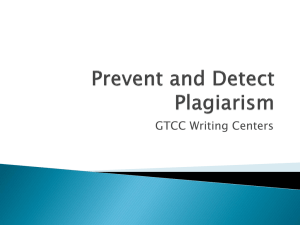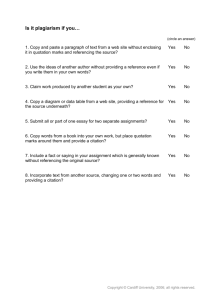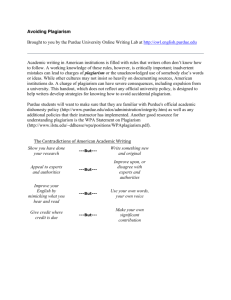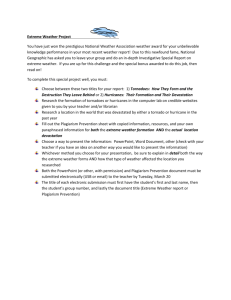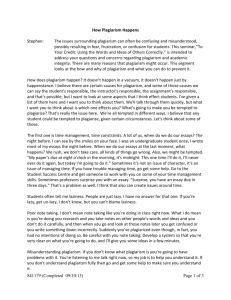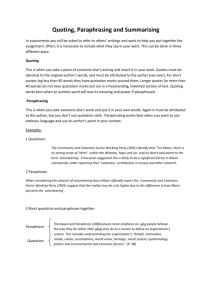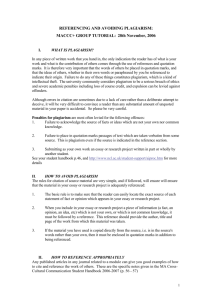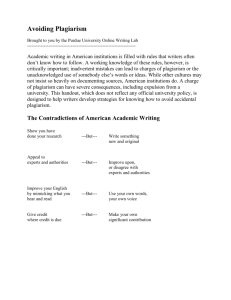PLAGIARISM - Nipissing University
advertisement
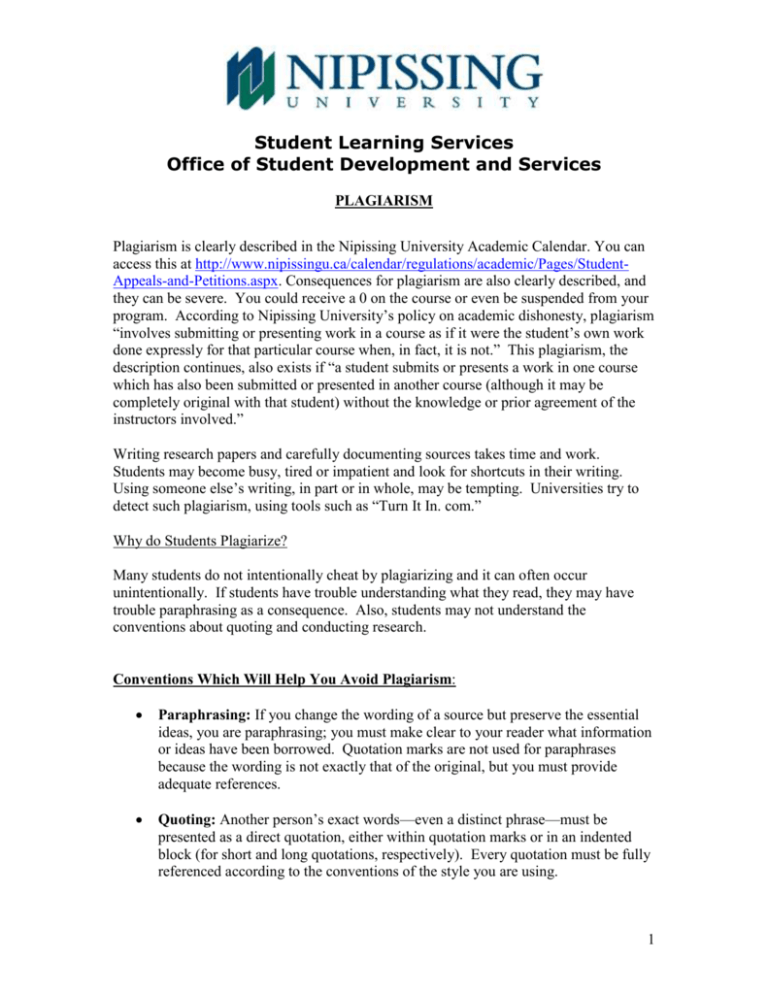
Student Learning Services Office of Student Development and Services PLAGIARISM Plagiarism is clearly described in the Nipissing University Academic Calendar. You can access this at http://www.nipissingu.ca/calendar/regulations/academic/Pages/StudentAppeals-and-Petitions.aspx. Consequences for plagiarism are also clearly described, and they can be severe. You could receive a 0 on the course or even be suspended from your program. According to Nipissing University’s policy on academic dishonesty, plagiarism “involves submitting or presenting work in a course as if it were the student’s own work done expressly for that particular course when, in fact, it is not.” This plagiarism, the description continues, also exists if “a student submits or presents a work in one course which has also been submitted or presented in another course (although it may be completely original with that student) without the knowledge or prior agreement of the instructors involved.” Writing research papers and carefully documenting sources takes time and work. Students may become busy, tired or impatient and look for shortcuts in their writing. Using someone else’s writing, in part or in whole, may be tempting. Universities try to detect such plagiarism, using tools such as “Turn It In. com.” Why do Students Plagiarize? Many students do not intentionally cheat by plagiarizing and it can often occur unintentionally. If students have trouble understanding what they read, they may have trouble paraphrasing as a consequence. Also, students may not understand the conventions about quoting and conducting research. Conventions Which Will Help You Avoid Plagiarism: Paraphrasing: If you change the wording of a source but preserve the essential ideas, you are paraphrasing; you must make clear to your reader what information or ideas have been borrowed. Quotation marks are not used for paraphrases because the wording is not exactly that of the original, but you must provide adequate references. Quoting: Another person’s exact words—even a distinct phrase—must be presented as a direct quotation, either within quotation marks or in an indented block (for short and long quotations, respectively). Every quotation must be fully referenced according to the conventions of the style you are using. 1 Student Learning Services Office of Student Development and Services Quoting within a paraphrase: Distinct phrasing—even when you are paraphrasing (ie. putting the author’s ideas into your own words)—if you take any significant word or phrase from the writing being paraphrased and slip it into “your” sentence, you must use quotation marks to show that these words or phrases are not yours. In other words, a paraphrased passage may be a blend of your expressions and meaningful quotations. Always include a citation. Summarizing: A summary of someone else’s ideas, even though it is less detailed and considerably shorter than the original, is still a version of his or her ideas, and must therefore be cited. Other types of plagiarism: o A student uses an assignment written in one course to satisfy the requirements of another course; o Students complete a group assignment and submit similar versions of the assignment when asked to submit their own; o Copying assignments in part or in whole from an online source; o A student submits work that was not done by him/her. ** Students are responsible for their use of source materials and for understanding academic regulations, so unintentional plagiarism will also result in penalties. When in doubt, ask your professor or a Student Learning Coordinator. 2
